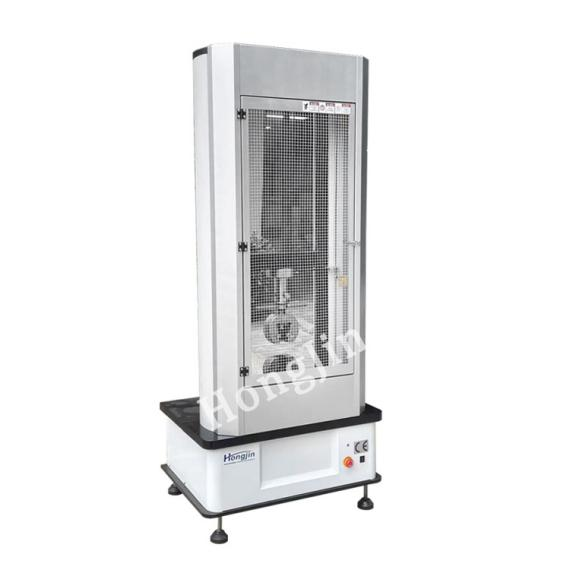The double column protective door tensile testing machine is mainly applicable to the detection of metal and non-metallic materials, such as rubber, plastic, wires and cables, optical fiber cables, safety belts, belt composite materials, plastic profiles, waterproof rolls, steel pipes, copper materials, profiles, spring steel, bearing steel, stainless steel (such as high hardness steel), castings, steel plates, steel strips, and non-ferrous metal wires for stretching, compression, bending, shearing, peeling, tearing Two point extension (with an extensometer) and other tests. This machine adopts an electromechanical integrated design, mainly composed of force sensors, transmitters, microprocessors, load driving mechanisms, computers, and color inkjet printers. It has a wide and accurate loading speed and force measurement range, and has high accuracy and sensitivity in measuring and controlling load and displacement. It can also perform automatic control experiments for constant speed loading and displacement. The floor standing model, styling, and painting fully consider the principles of modern industrial design and ergonomics.
The double column protective door tensile testing machine is a new type of material testing machine that combines electronic technology and mechanical transmission. It has a wide and accurate loading speed and force measurement range, and has high accuracy and sensitivity in measuring and controlling load, deformation, and displacement. It can also perform automatic control tests for constant speed loading, deformation, and displacement, and has the function of low cycle load cycle, deformation cycle, and displacement cycle.
Suggestions for the operation of the double column protective door tensile testing machine:
1. When using a tensile testing machine, it is necessary to carefully read the technical manual, be familiar with the technical indicators, working performance, usage methods, and precautions, and strictly follow the steps specified in the instrument manual for operation.
2. Employees who use the tensile testing machine for the first time must operate it under the guidance of skilled personnel, and can only perform vertical operation after mastering it proficiently.
3. The tensile testing machine and other equipment used during the experiment should be neatly arranged, easy to operate, observe, and record.
4. When using a tensile testing machine, its input signal or external load should be limited within the specified range and overloaded operation is prohibited.
5. Before using the tensile testing machine, it must be operated with no load to ensure that there are no faults before loading and use. Lubricate before use, wipe clean after use, and pay attention to daily maintenance and upkeep.
6. Before powering on the tensile testing machine, ensure that the power supply voltage meets the input voltage value specified by the tensile testing machine. The tensile testing machine equipped with a three wire power plug must be inserted into a protective grounding power socket to ensure safety.
7. The tensile testing machine cannot be dismantled, modified or disassembled for use at will.
8. Regularly maintain and maintain the tensile testing machine, and store it in a dry and ventilated place. If the tensile testing machine has been used for too long, it should be regularly powered on and started to prevent moisture and mold from damaging its components.
The tensile testing machine has a wide range of testing items, mainly including tensile stress, tensile strength, constant elongation stress, constant stress elongation, fracture strength, elongation after fracture, yield strength, yield point elongation, yield point tensile stress, tear strength, peel strength, puncture strength, bending strength, elastic modulus, etc.
Post time: Oct-17-2023

